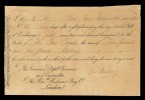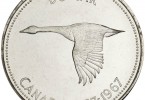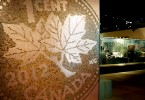Our Chief Curator leaves a job well done
By Chris Faulkner
This week, our Chief Curator Paul S. Berry retired from heading up the National Currency Collection (NCC), Canada’s most significant currency collection. Paul has worked tirelessly and with great passion for the last 35 years to maintain and grow the NCC even putting in a few years in the Bank’s Currency Department. We asked Chris Faulkner, Chair of the NCC’s Acquisitions Advisory Committee, to speak about Paul and his career. Dr. Faulkner is a film studies professor and researcher at Carleton University and has known Paul longer than any of us.
I can’t remember when I first met Paul, but it must have been shortly after his arrival in 1984. It seems like yesterday… No, it doesn’t, actually. It was a long time ago, and we both had more hair then! Well, he did anyway. A lot has changed over the years besides our physical appearance.
Paul speaks at the 2008 opening event of Just Add Milk, an exhibition about milk tokens at the Currency Museum.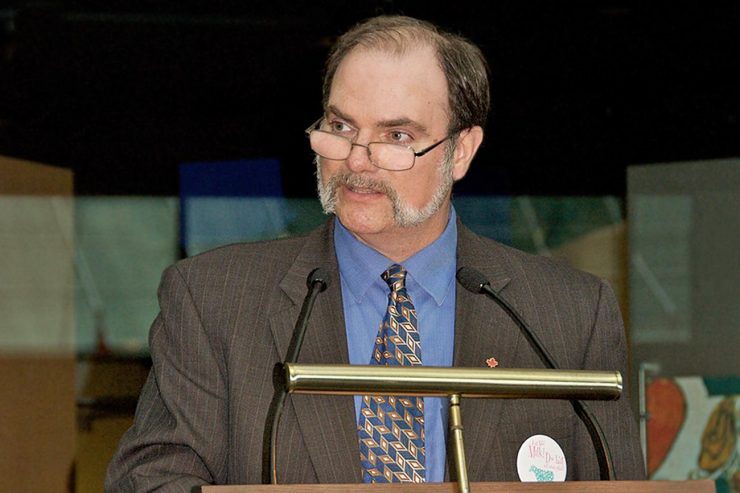
What with the usual pressures of work and family, I was no more than a very occasional visitor to the National Currency Collection in the ’80s and ’90s when the collection offices were at ground level and the Museum entrance was on Wellington Street. I only got to know Paul better into the new millennium, and especially after he became Chief Curator, when my visits for the purposes of research became more regular.
What Paul was able to accomplish is amazing and represents a terrific legacy. The move from street level to much more expansive quarters (albeit below ground!), the creation of a proper suite of offices, space for an ever growing library (easily the best of its kind in Canada), proper storage vaults for an extraordinary collection of numismatic material (again, easily the best of its kind in Canada), state-of-the-art conservation facilities, a photography studio—all of this was accomplished under Paul’s tutelage and represents an unparalleled resource for research and support for the Bank of Canada Museum. He has been a great steward of the collection and as a result a tremendous asset to the Bank.
Paul laid out a rational acquisitions policy for the numismatic collection and continued to ensure the growth of the library. When he decided to reach out to the numismatic community by forming an Acquisitions Advisory Committee in 2007, I willingly accepted the invitation to sit as its chair because of my respect for Paul and because of my belief in the national—even international—importance of the collection. Paul has been transparent with the committee as far as collection policy and practice are concerned and has always accepted the committee’s two cents’ worth with grace and equanimity.
Life imitates art as Paul poses with his own caricature.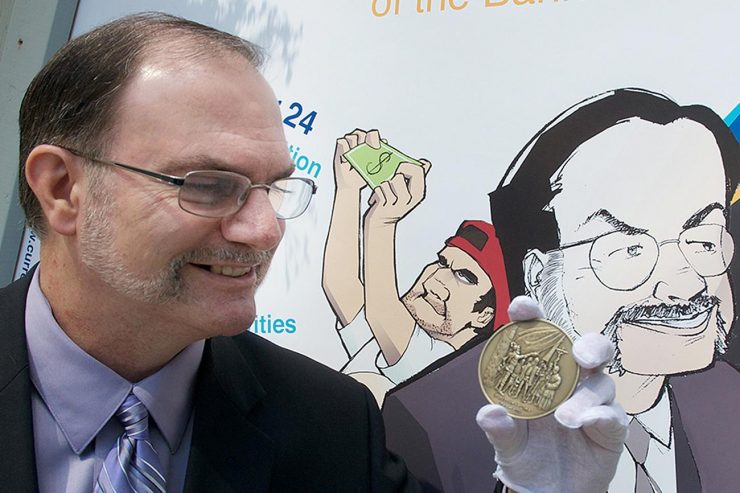
What has impressed me, both as the Chair of the Acquisitions Advisory Committee and as a frequent research visitor, is not only Paul’s evident administrative capabilities but also his breadth of knowledge about the history of currency and banking. Such knowledge is not easily won. Paul is blessed with an historical sensibility, organizational skills and an attention to detail. These are the prerequisites for a first-rate numismatist. More than once he and I have looked at the same artifact and Paul has been able to see things I haven’t! Furthermore, I don’t think we’ve ever had a dull conversation on a topic of numismatic interest, and we’ve had a lot of conversations over the years.
Now that he’s retiring he won’t get his hair back, but it’s not too late to put all that accumulated knowledge on paper and enlighten us with what he’s learned.
Thank you, Chris. Please join all of us here at the Museum, and at the Bank, in offering Paul the fondest best wishes for this new chapter of his life.
Thanks, Paul, we’ll miss you!
The Museum Blog
Curators Begin Removal of Artifacts
By: Graham Iddon
Notes from the Collection : 2013 RCNA Convention Winnipeg
By: David Bergeron
First Artifacts to Leave the Museum: And they were big
By: Graham Iddon
Director’s chair : “I don’t know why you say goodbye, I say hello.”
By: Ken Ross
Remembering Alex Colville (1920-2013)
By: Raewyn Passmore
Farewell to the Currency Museum c.1980
By: Graham Iddon

